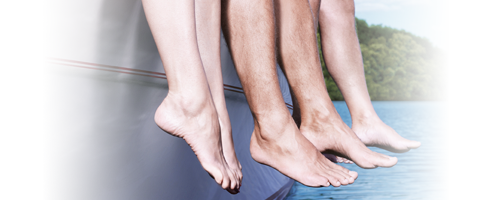Varicose veins are a common disease
Here you will find answers to your questions on varicose veins

Frequently asked questions
What are varicose veins?
Varicose veins are pathologically enlarged superficial veins, often appearing as twisted or nodular structures in the legs. In technical terms they are also called varicosities.
Varicose veins develop when the veins dilate because of a hereditary weakness in the connective tissue and the valves can no longer close tightly. The blood flow from the feet back to the heart is disrupted as blood sometimes flows in the wrong direction (back towards the feet) and pools in the leg veins. As a result, the pressure in the veins increases, putting them under continuous stress until varicose veins develop.
The term “varicose vein” derives from the Latin root varix meaning “twisted” because of the tortuous and sinuous way in which the veins run.
The smallest varicose veins are spider veins and the largest are varicose veins of the side branch veins and trunk veins. The condition of suffering from varicose veins is known as varicose disease, also technically called varicosis. The condition is chronic and progressive, that is to say, there is no permanent cure. Even after varicose veins have been successfully treated, new ones may develop with time at the same site or at untreated sites and require further Treatment.
Nevertheless, you can and should do something against varicose veins to prevent any complications developing.
